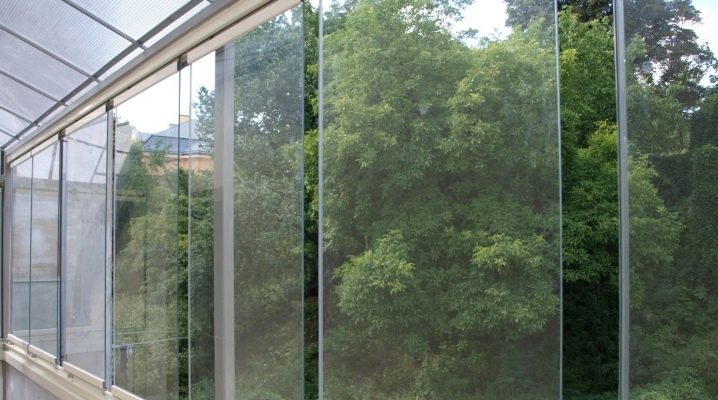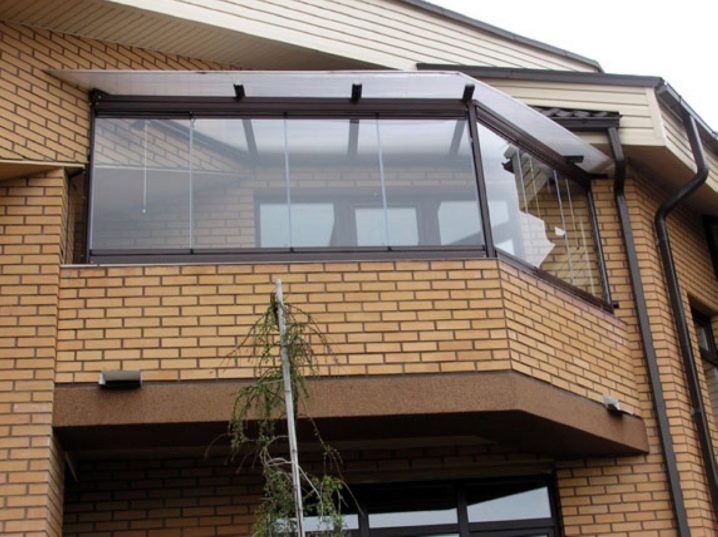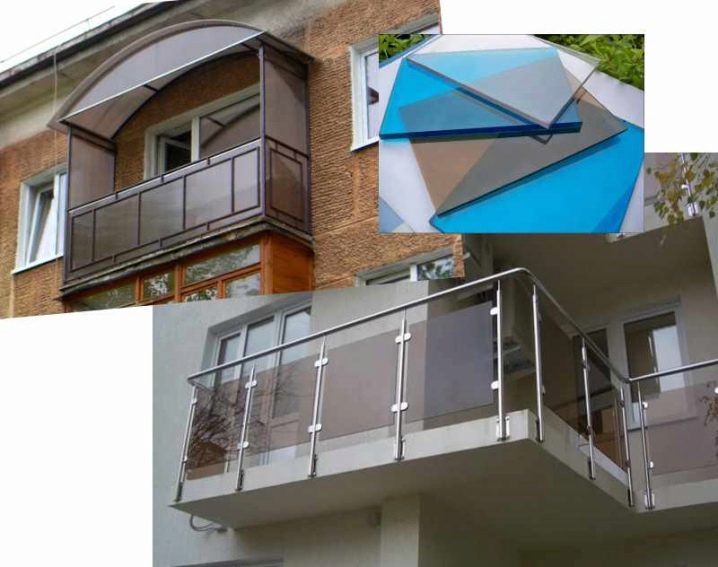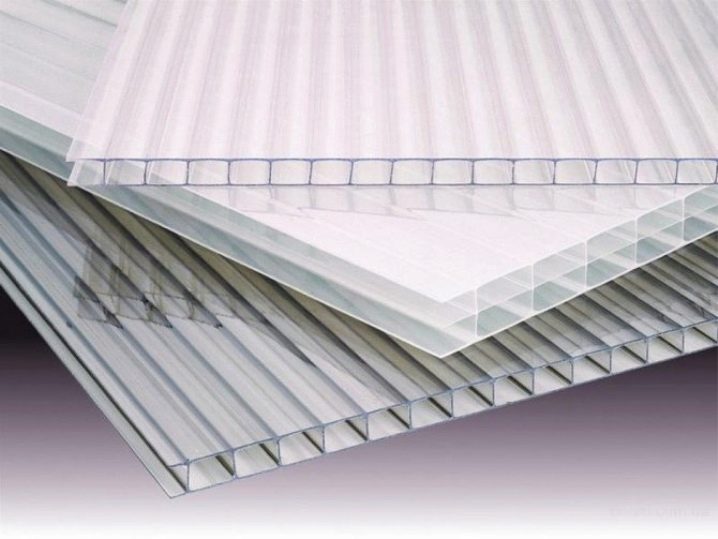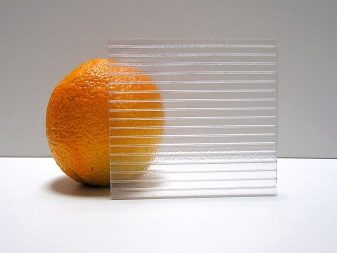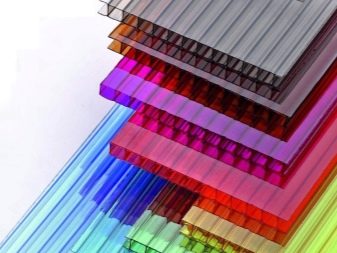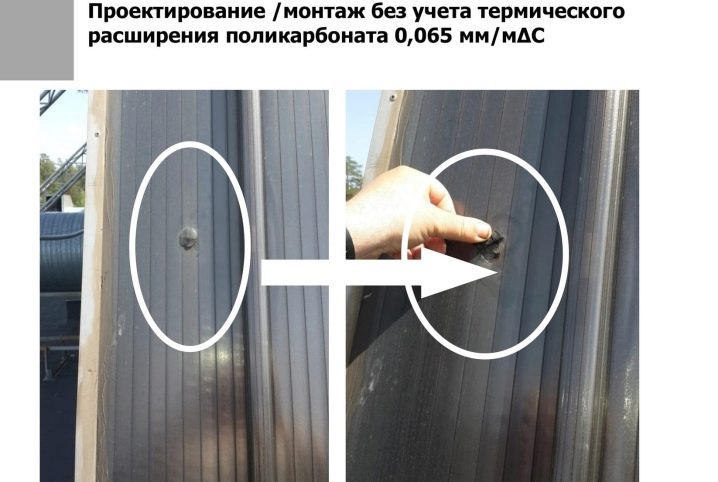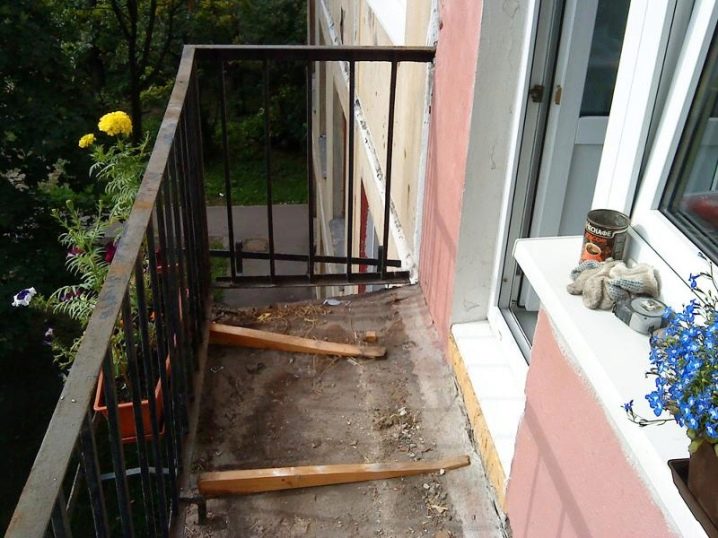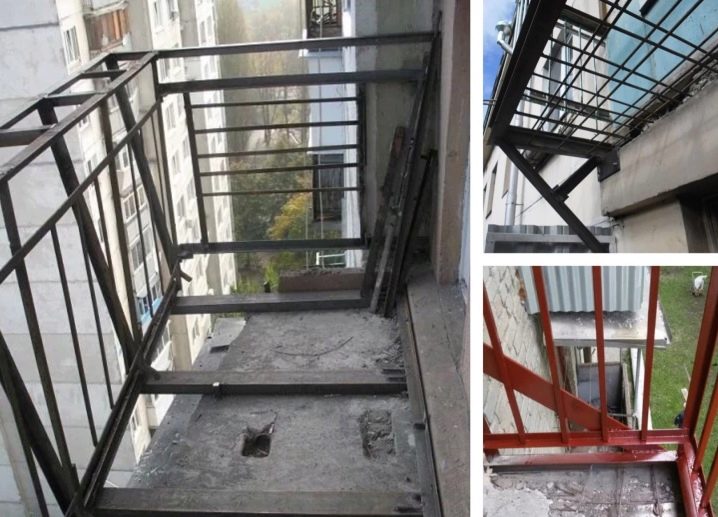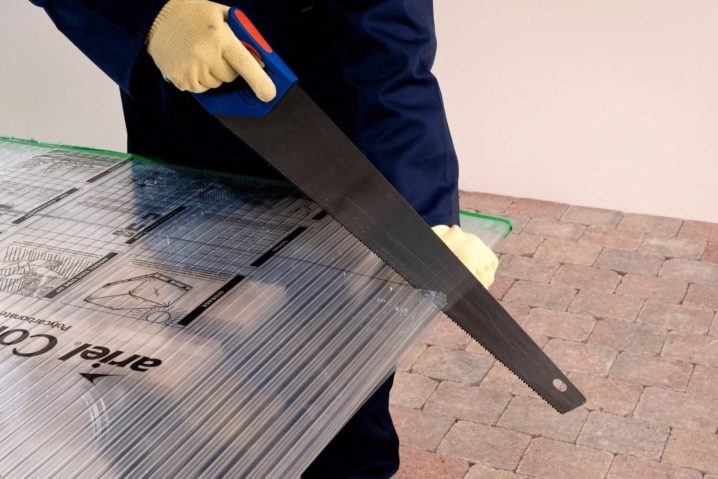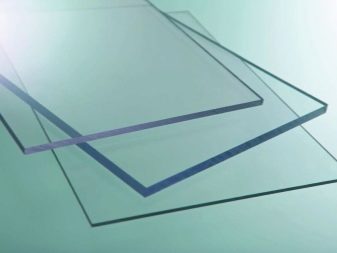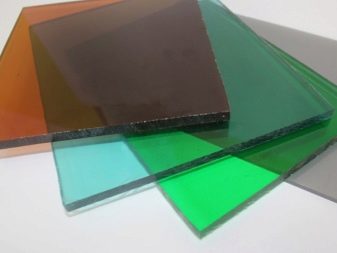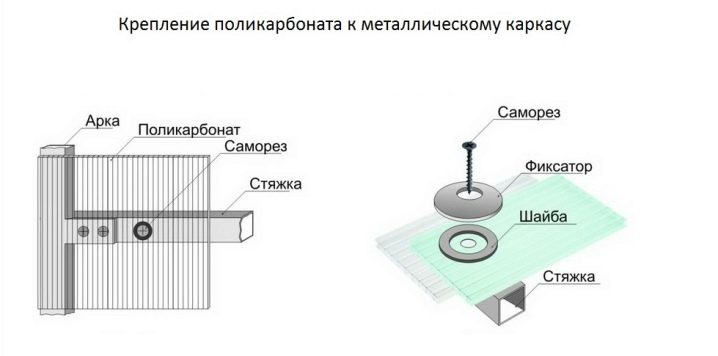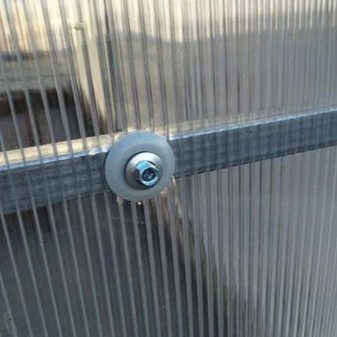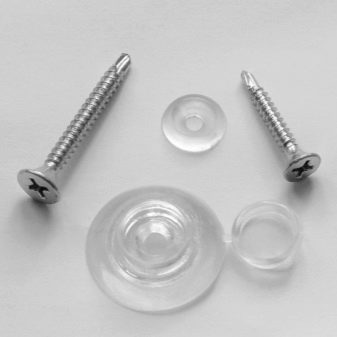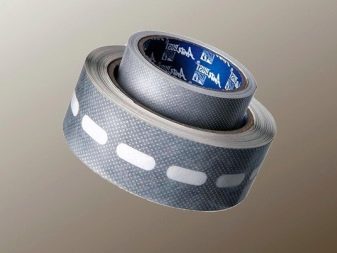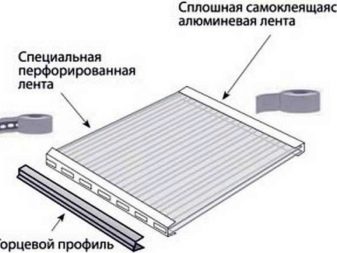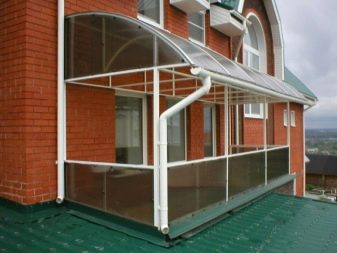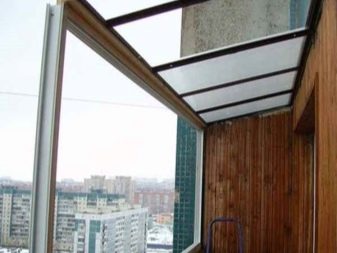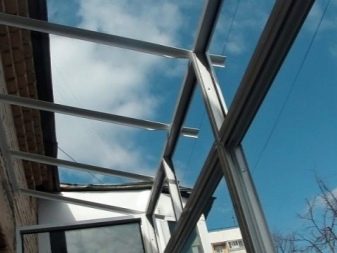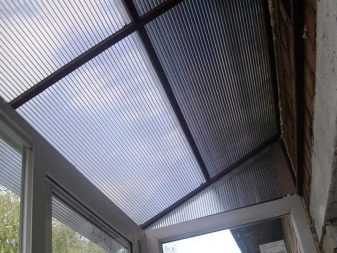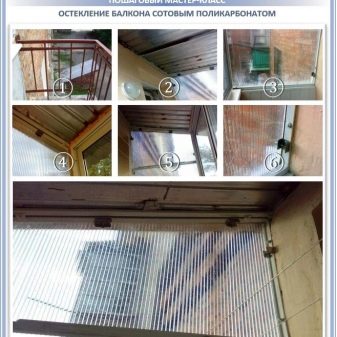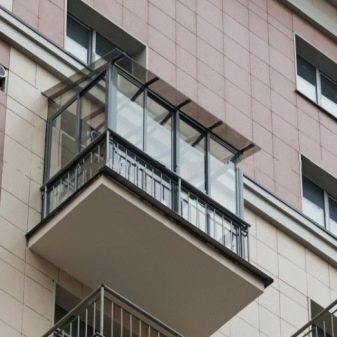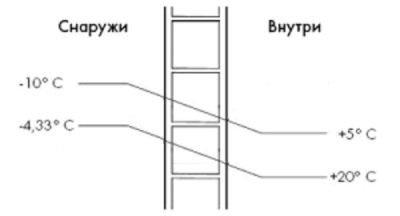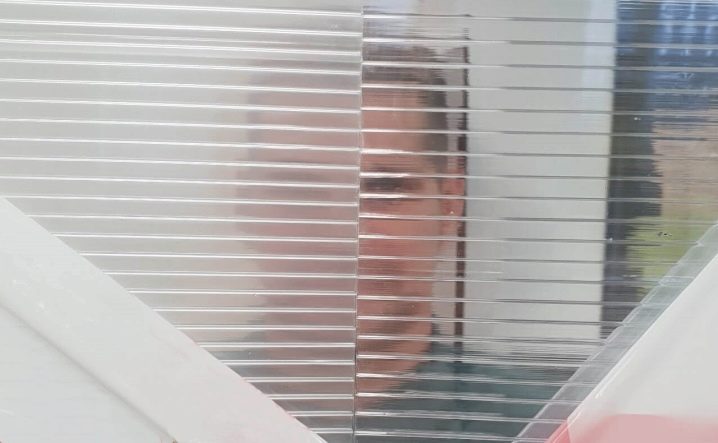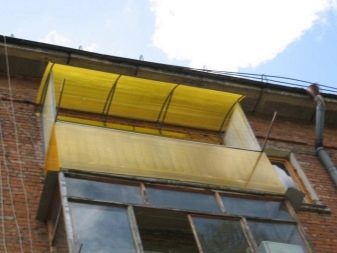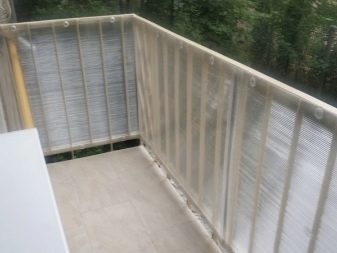Glazing of the balcony with polycarbonate
Arrangement of a balcony is a matter that requires significant financial and material costs, therefore it is planned that it will serve in the future for a long time. This can be ensured by high-quality external and internal finishing. To make the appearance of the balcony modern and look impressive, experts suggest choosing cellular polycarbonate as the material. Why is it better than other materials, and what negative sides it has, we will analyze in this article.
Advantages and disadvantages
Polycarbonate is essentially thermal resistant polymer... This is a transparent plastic made in the form of rather thin sheets that are connected with a large number of ribs. The air space between the ribs is called a honeycomb.
This material has many advantages, but it is also not without its disadvantages. First, let's consider its positive features.
Polycarbonate has excellent sound and thermal insulation. A material with a thickness of 12 to 15 mm is able to retain as much heat as remains when using insulated glass units made of metal-plastic. When installing it instead of plain glass thermal insulation is doubled.
At the same time, the sheets are quite thin, a maximum of 0.7 mm, but at the same time they are plastic and durable.
Heat resistance material allows you to use it for a long time, despite significant temperature differences. And also it should be noted impact resistance, which helps out during hail or other inclement weather.
Manufacturers set the service life in the region of 10-15, and in some cases up to 20 years for premium materials.
The material has a special protective coating that does not transmit harmful ultraviolet rays. At the same time, up to 86% of daylight can penetrate into the room. In addition, polycarbonate is not capable of burning. It does not spread fire, gradually smoldering under its influence.
The positive characteristics include acceptable cost.
You can easily select the desired color scheme, ultra-modern design, and installation is quite quick and easy.
Polycarbonate can be used to make the entire balcony cladding. This will save you both time and money. However, everything is not as cloudless as it seems at first glance. This material can be scratched quite easily, so it should be handled with care and attention. For the same reason, you cannot clean it with hard brushes, as well as aggressive chemistry with alkali content.
Cellular polycarbonate has another significant feature. Under the influence of heat, it heats up and expands, and after it cools down, it returns to its original size. As a result, a gap may form, where, accordingly, both heat and cold penetrate. This must be taken into account during installation and operation.
Preparatory work
It is not too difficult to close the balcony with polycarbonate. However, initially it will be necessary to conduct competent preparation in order for the work to be carried out efficiently. First of all, you need to get rid of the old finish, if any, thoroughly clean the base from debris and dust and carefully examine it.
It may be necessary to reinforce the slab or repair it with a new screed.
The metal base is cleaned, after which it is treated with anti-corrosion agents, and, if necessary, it can be replaced with a new one. If you plan to insulate the balcony, you will need a foam block parapet.
And you also need to prepare the building material itself.It is sold in standard sheets, which means you will need to cut them according to the required dimensions. A conventional fine-toothed circular saw is suitable for this purpose.
Care should be taken to ensure that a small gap remains between the building material and the aluminum base during installation. Experts recommend making it 4 mm wide - it is optimal.
In addition, it should be borne in mind that best of all, the penetration of light into the room is provided by monolithic transparent models... However, consumers often give preference to colored products, believing that this will add brightness and uniqueness to the appearance. There can be no basic recommendations in this matter, the choice should be based on personal preferences and tastes.
Mounting
Polycarbonate sheets are fixed with screws or self-tapping screws. During glazing, microcracks may appear, which can be avoided by using clamps with a thickened clamping head.
An excellent option, according to experts, would be the use of self-tapping screws with thermal washers.
The corners will need to be covered with special aluminum tape or plugs. This will help keep dirt and moisture out of them. After that, the polycarbonate is neatly attached to the frame. It is best to use silicone to seal the joints.
The final step is to install the visor. It is especially relevant for the last floors, since they are most open to snow and rain. A polymer roof can be a regular semicircular, in the form of a simple canopy, or an original design.
For any canopy, you will need to make a metal frame that will take on the main load. The roof is capable of transmitting 20 to 70% of the daylight. The final figure will depend on the thickness, color and type of polycarbonate.
In order for the material to withstand more severe loads, it is recommended to use thicker sheets.
And also during installation, it must be borne in mind that the sheets are laid out with a protective cover. It is permissible to remove the protective film only after all the work is completed, and the coating is no longer in danger. When aligning the ends, the seam will need to be glued with self-adhesive tape, after which it is necessary to close it with an end profile.
Useful Tips
It is not too difficult to sheathe a balcony with this polymer. However, there are subtleties that only specialists or experienced users can warn about in advance. Considering them, you can avoid serious mistakes in order to achieve a decent result.
I must say that cellular polycarbonate is quite lightweight, but at the same time so strong that it surpasses even glass... This allows the material to withstand serious loads even in difficult weather conditions, for example, a large thickness of snow. However, it is still not intended for supporting structures.
Polycarbonate has moderate thermal conductivity... It is lower than glass, which allows better heat retention.
Do not forget about the expansion of polycarbonate sheets when heated. This requires 4mm gaps to be left at the edge of each material during installation.
Sunlight transmission depends on the color of the sheets. You can glaze the panorama with muddy sheets, this will add sophistication and the necessary darkness. In addition, the owners of the premises will be reliably hidden from prying eyes. In some cases, it is even permissible to refuse to use curtains or blinds, colored windows will perfectly cope with their role.
The sound insulation of the polymer turns out to be an order of magnitude higher than that of glass. And also it is safer when breaking, since at this moment sharp fragments are not formed that can lead to injuries. For this reason, polycarbonate is often chosen to equip a balcony in a children's room. Fire resistance can also be attributed to safety indicators.
The polymer is easy to process, you can use a saw with fine teeth or the most ordinary jigsaw for it.
Care must be taken to avoid accidentally scratching the sensitive surface. And also it is impossible to use aggressive cleaning agents during operation.
Balconies made of this building material are often equipped by homeowners in "Khrushchevs". The fact is that such buildings are quite old, and it is not recommended to make them heavier additionally. Polycarbonate is installed on aluminum profiles that are lightweight, and they, in turn, transfer part of the load to the wall, connecting the parapet to it.
A visual overview of the glazing of the balcony with polycarbonate in the "Khrushchev" is presented in the following video.
